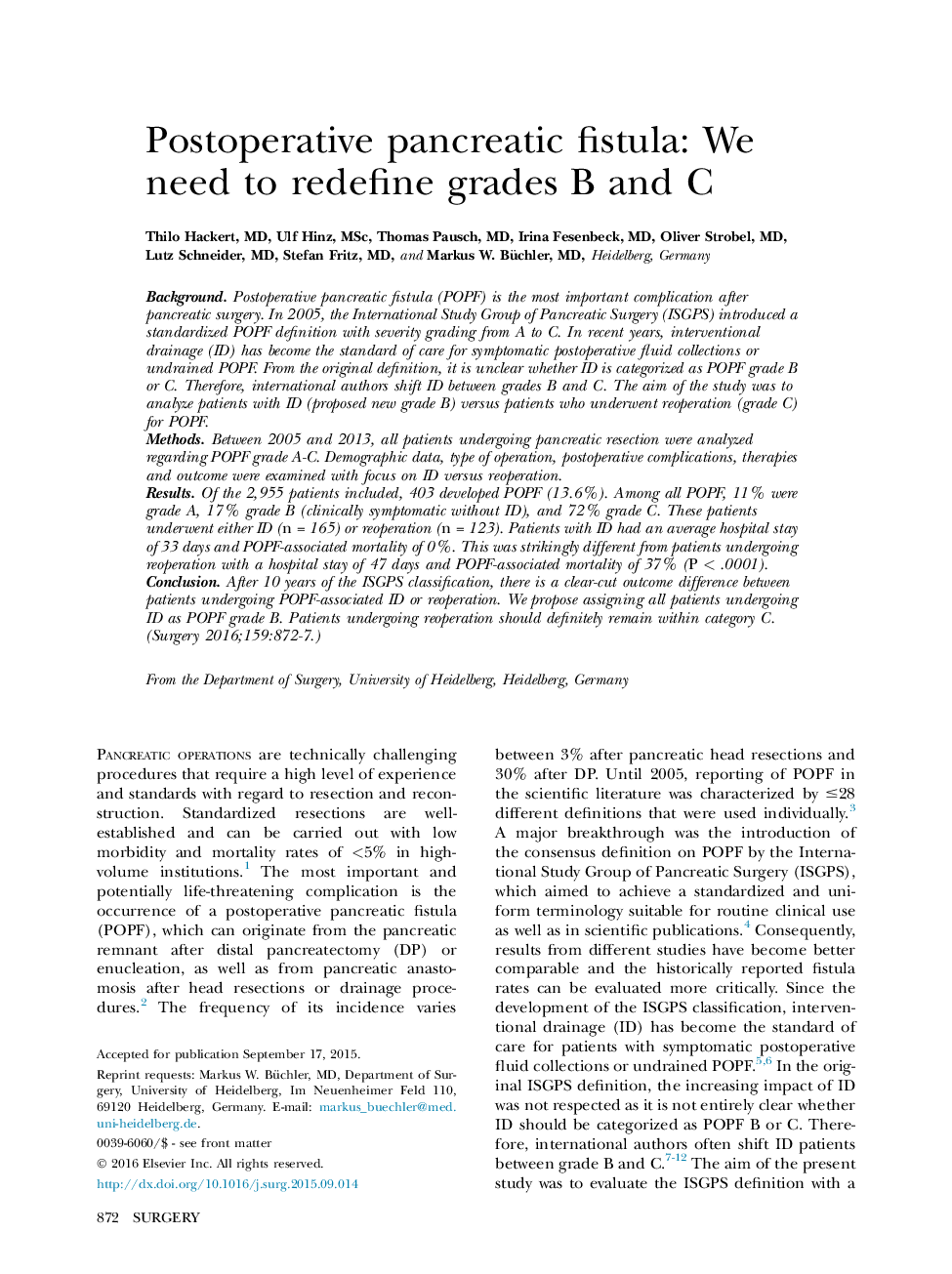| Article ID | Journal | Published Year | Pages | File Type |
|---|---|---|---|---|
| 4306818 | Surgery | 2016 | 6 Pages |
BackgroundPostoperative pancreatic fistula (POPF) is the most important complication after pancreatic surgery. In 2005, the International Study Group of Pancreatic Surgery (ISGPS) introduced a standardized POPF definition with severity grading from A to C. In recent years, interventional drainage (ID) has become the standard of care for symptomatic postoperative fluid collections or undrained POPF. From the original definition, it is unclear whether ID is categorized as POPF grade B or C. Therefore, international authors shift ID between grades B and C. The aim of the study was to analyze patients with ID (proposed new grade B) versus patients who underwent reoperation (grade C) for POPF.MethodsBetween 2005 and 2013, all patients undergoing pancreatic resection were analyzed regarding POPF grade A-C. Demographic data, type of operation, postoperative complications, therapies and outcome were examined with focus on ID versus reoperation.ResultsOf the 2,955 patients included, 403 developed POPF (13.6%). Among all POPF, 11% were grade A, 17% grade B (clinically symptomatic without ID), and 72% grade C. These patients underwent either ID (n = 165) or reoperation (n = 123). Patients with ID had an average hospital stay of 33 days and POPF-associated mortality of 0%. This was strikingly different from patients undergoing reoperation with a hospital stay of 47 days and POPF-associated mortality of 37% (P < .0001).ConclusionAfter 10 years of the ISGPS classification, there is a clear-cut outcome difference between patients undergoing POPF-associated ID or reoperation. We propose assigning all patients undergoing ID as POPF grade B. Patients undergoing reoperation should definitely remain within category C.
